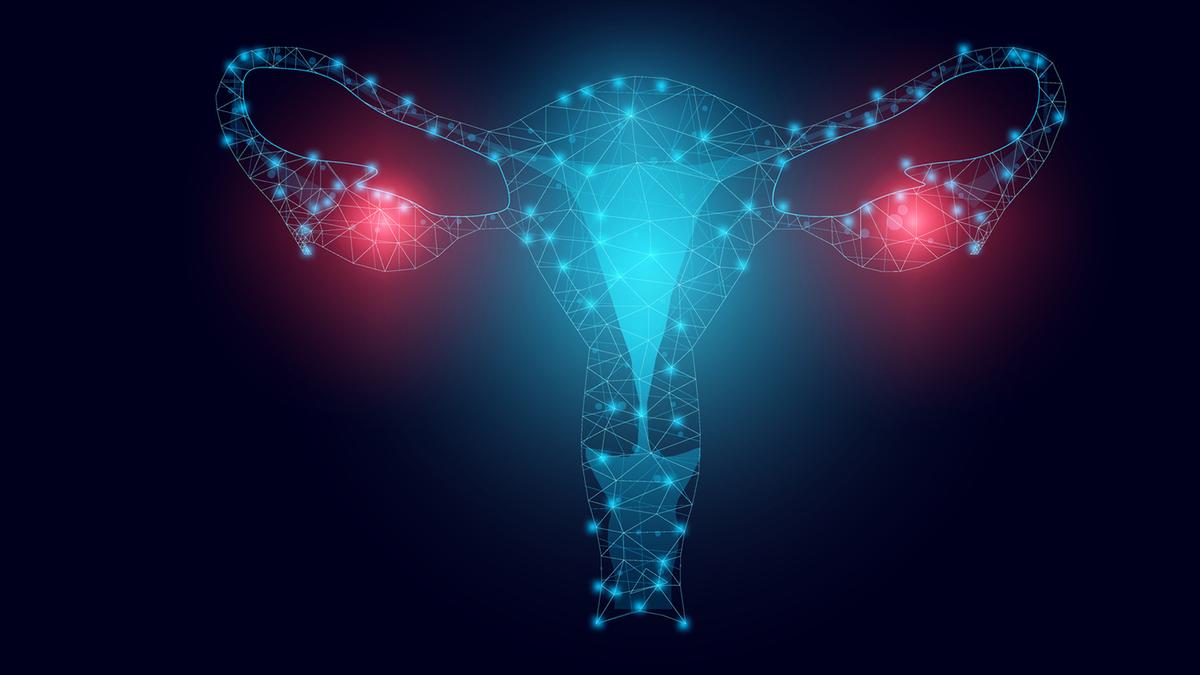Image for representation purposes only.
| Photo Credit: Getty Images
The National Centre for Biological Sciences (NCBS), in a collaborative study, have found that two simple environmental factors — calcium and pH — dictate whether the cancer spheroids hold together, fall apart, or even rebuild themselves from scratch.
Floating cluster of cells
When ovarian cancer spreads, it often does so via floating clusters of cells – called spheroids – that drift through the abdominal cavity.
“These spheroids are quite sophisticated — some look like solid, misshapen masses (moruloids), while others resemble smooth, mulberry-like hollow structures (blastuloids). Why and how these structures emerge, and whether they affect how the cancer progresses has been under speculation for years,” NCBS said.
Dr. Tapomoy Bhattacharjee’s lab at the NCBS in collaboration with Dr. Ramray Bhat’s lab at the Indian Institute of Science (IISc.), conducted this interdisciplinary work published in the scientific journal Small.
Led by Sreepadmanabh M., a graduate student at the Bhattacharjee lab, the team first investigated hollow blastuloids, which periodically undergo dramatic volume fluctuations.
“Every few hours, their central cavity pulses, collapses dramatically, and then steadily recovers — somewhat like a slowed-down heartbeat. Remarkably, despite these catastrophic fluctuations, the overall blastuloid, comprising hundreds of tightly organised cells, eventually recovers its overall shape. The secret to this recovery lies in the E-cadherin junctions, the biological mortar that binds cells together, whose stability depends on calcium,” NCBS said.
By tweaking calcium levels, the researchers found they could flip the spheroids between completely different states.
A sudden removal of calcium caused blastuloids to collapse into solid, moruloid-like masses within minutes. But when calcium was restored, the hollow structure reappeared far quicker than it had formed in the first place. Even when spheroids were completely disassembled into single cells, they rapidly reassembled into complex hollow forms in just two days — a feat that normally takes more than a week. “Simply put, once the cells have formed a blastuloid, the next time around they remember how to rebuild it much faster,” said Sreepadmanabh.
Direct clinical connection
Going beyond this, the team found that another commonplace entity — pH, a measure of how acidic or alkaline the environment becomes — proves equally influential. This has a direct clinical connection because cancer spheroids are often found in acidic ascitic fluid inside the abdomen. The researchers found that when exposed to acidic pH (~6), blastuloids paused their pulsations, leaving their hollow cavity intact.
“Contrastingly, alkaline conditions (pH ~8.5) collapsed them into solid masses– which again was completely reversible upon restoring pH to normal levels,” NCBS said.
Published – September 17, 2025 07:05 pm IST
